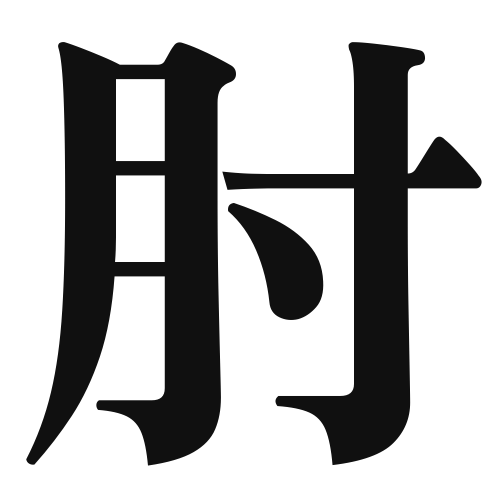1. Overview of Meaning
The kanji “肘” (pronounced “hiji” in Japanese) means “elbow.” It refers to the joint in the middle of the arm that allows for bending and movement.
2. Formation and Radical
The kanji “肘” is a phono-semantic compound (形声文字), which means it combines both a phonetic and a semantic component. The left part, “肉” (meaning “meat” or “flesh”), indicates that it relates to the body, while the right part, “矢” (meaning “arrow”), contributes to the pronunciation.
The radical of “肘” is “肉” (the meat radical), which is commonly found in kanji related to the body or flesh.
3. Examples of Usage
Common words and phrases that include “肘” are:
- 肘掛け椅子 (ひじかけいす, “hijikakeisu”) – armchair
- 肘をつく (ひじをつく, “hiji o tsuku”) – to lean on one’s elbow
Example sentence in daily conversation:
「肘が痛いので、病院に行く必要があります。」
(“My elbow hurts, so I need to go to the hospital.”)
4. Synonyms and Antonyms
Similar kanji with related meanings include:
- 腕 (うで, “ude”) – arm, which refers to the entire limb rather than just the elbow.
Antonyms or contrasting kanji include:
- 膝 (ひざ, “hiza”) – knee, which is the joint at the opposite end of the arm.
5. Cultural and Historical Background
The kanji “肘” is often used in Japanese culture, particularly in contexts related to health and physical activity. It appears in various proverbs and idiomatic expressions, such as:
- 肘を張る (ひじをはる, “hiji o haru”) – to be assertive or to take up space, often used to describe someone who is being overly confident.
This reflects the importance of body language and posture in Japanese culture, where physical expressions can convey significant meaning.
